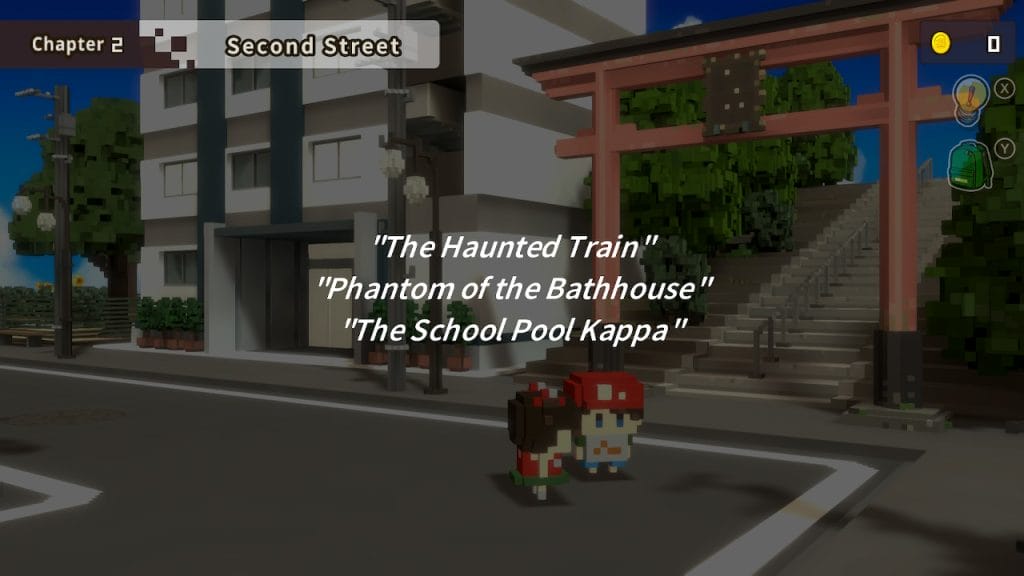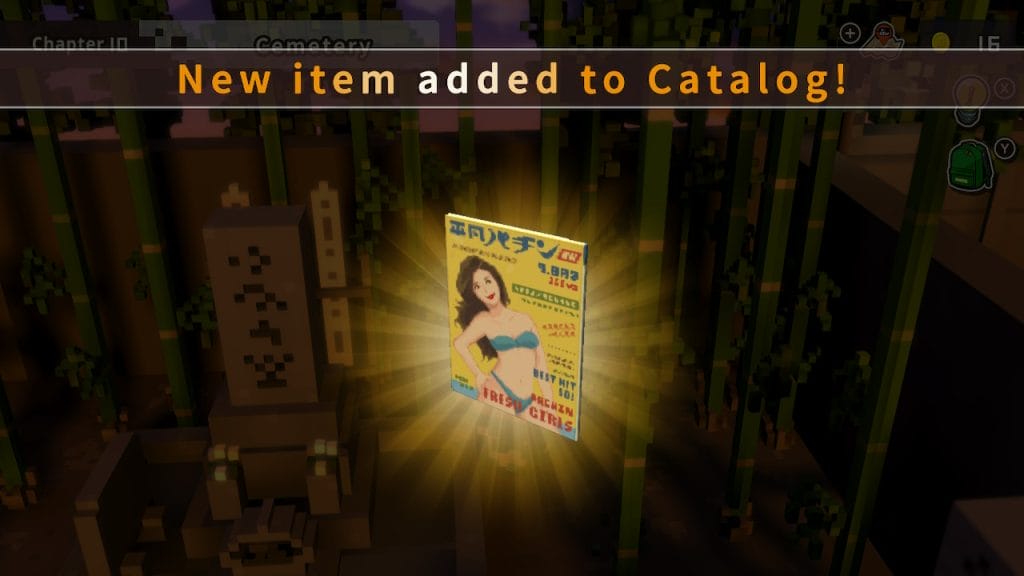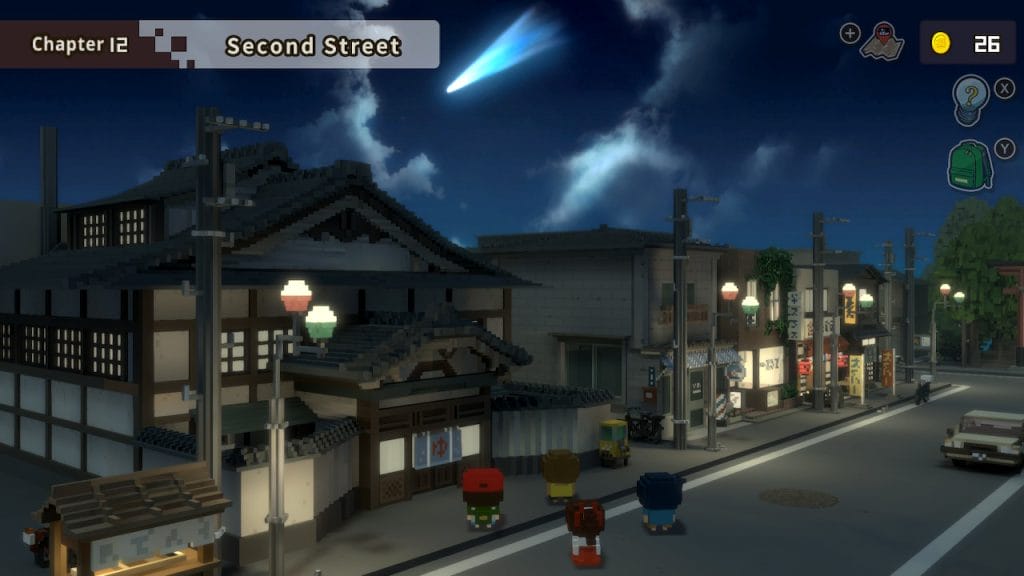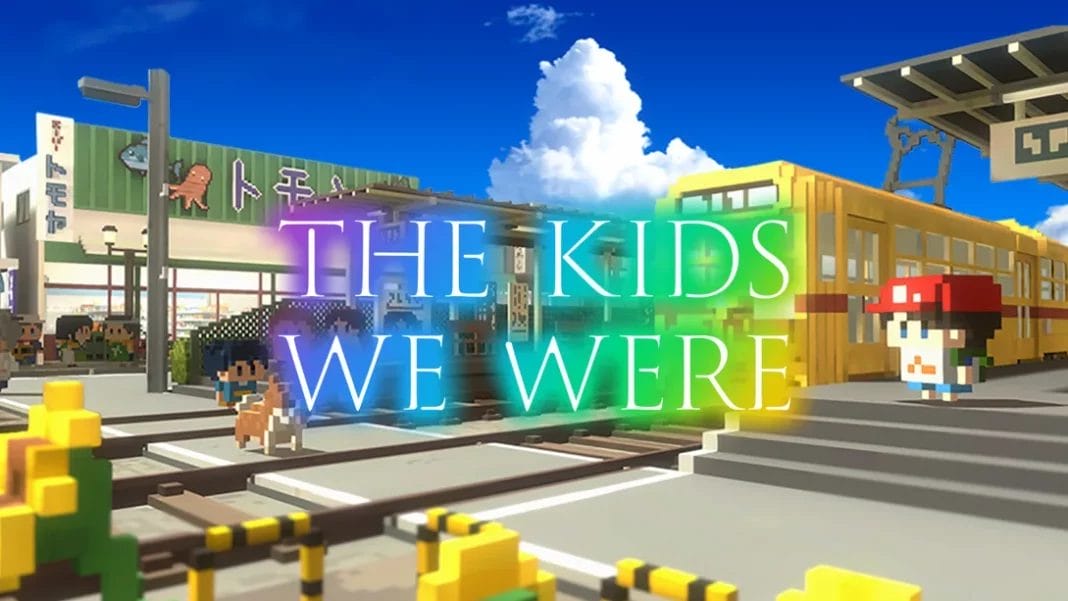The Kids We Were from Gagex is a story-driven adventure game set in the 80s in Japan with a voxel aesthetic. It originally released on iOS and Android last year and has been retooled for Nintendo Switch and PC in the form of a complete edition that includes everything from the original release with new exclusive content. Before the Nintendo Switch release, I spent a bit of time with it on my iPhone and enjoyed the little I played. Now that I have finished it and gotten almost every collectible through the Nintendo Switch release, The Kids We Were is one of the best indie releases of the year for sure.

The Kids We Were is set in Japan across different time periods. What initially feels like a normal trip to the small town of Kagami in Japan ends up being quite the journey through time, gorgeously styled locations, and more. You play as Minato who is trying to find his father alongside his little sister Mirai. The narrative involves superstition, betrayal, love, friendships, and more through excellent characters. Even some of the NPCs in the story are very memorable like a drunk you run into later on and the NPCs who serve as tutorials in different locations.
Without getting into any spoilers, The Kids We Were’s narrative managed to surprise me. There were a few instances where the outcome was very predictable, but there are quite a few surprises. I was mostly surprised at how long the game is. Barring one chapter in the middle that felt like it dragged on because of fetch quests, I enjoyed the pacing and character development across the narrative. The Kids We Were on Nintendo Switch and PC includes extra collectibles scattered across. I usually end up exploring a lot so the time I spent here went up a bit thanks to these collectibles and even the coins you find.

Despite there being some choices you can make, The Kids We Were is mostly a linear experience. You have free movement in parts as you explore different parts of the city in different periods. As you progress through the story, more areas and NPCs are unlocked alongside newer collectibles. The core gameplay involves exploring and interacting with things and people. You can save just about anywhere as well. When I initially watched the trailer and checked out a bit of The Kids We Were on iOS, I liked the aesthetic and premise, but wasn’t sure how I’d feel if the game was too long. Thankfully, it didn’t overstay its welcome by the end. The finale went above and beyond what I’d expected, which is good to see.
In terms of accessibility, you can use a hint option almost every time if you aren’t sure what to do. This gives you an idea of what to do next and tells you if there are any coins in the area that you haven’t collected yet. These are scattered and hidden across different areas just like the collectibles. The collectibles are very nicely drawn memorabilia from the time period in the voxel aesthetic. I also like that the game prominently mentions a point of no return for completionists to go and collect everything before moving to the next portion of the story.

Visually, The Kids We Were looks very good on Nintendo Switch in both docked and handheld modes. The performance is variable but it never feels bad. The load times are a bit bad though between areas. These coupled with the slow transitions and fading into another scene make The Kids We Were feel slower than it should be. Barring that annoyance, I noticed one typo and a text overflow issue. Those issues aside, I had no problems with the 15 or so hours I put into this on my Switch and Switch Lite.
The Kids We Were has no voice acting but the music is very relaxing. The combination of the music with the atmospheric sounds like the cicadas and crickets depending on the time and location make The Kids We Were feel more immersive. There are also more tense songs that play during those moments in the story and one that is pretty unsettling.

If you already played The Kids We Were on iOS or Android and are interested in the new content here, it is very well done. The collectibles add to the experience and the new epilogue content feels like a natural addition to the story. It doesn’t feel like something tacked on, but a nice resolution to one aspect with its own questions. You unlock this once you complete the main game as a bonus story accessible from the title screen.
I hope potential future updates can speed up some of the scene transitions and fix the few dialogue issues. The Kids We Were is already a really great experience, but having these minor issues fixed would make it feel a lot more polished. Those who read quickly and want to progress scenes faster might have trouble getting used to how choices are loaded alongside dialogue resulting in a few accidental presses. I got used to this after the first two dialogue choices in the game.

Earlier this year, I reviewed GameTomo’s story heavy adventure game Sumire and enjoyed it a lot. It was a well-paced emotional story with gorgeous art that I likely would’ve missed had I not had the chance to review it given how packed this year has been for game releases. The same holds true for The Kids We Were. Had it been released in a more crowded period, I’d have not been able to properly experience it. Barring some moments in the middle where I felt like the pacing was a bit off, the 15 hours I spent with The Kids We Were including its new content was excellent. If you enjoy games like To the Moon or even the recently released Sumire, you absolutely need to play The Kids We Were.




